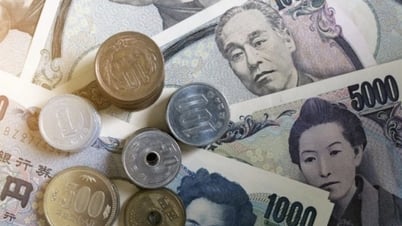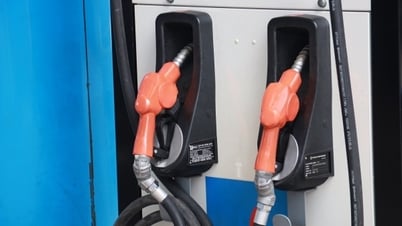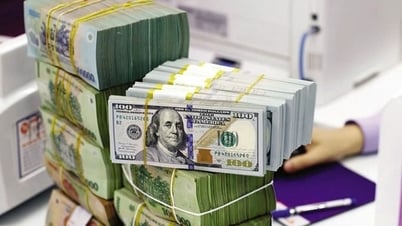These are the assertions made by policy makers, international and domestic experts, and representatives of financial institutions at the workshop “Bank collateral - Current issues of concern” organized by Banking Times on April 28, in Hanoi .
 |
| Workshop “Bank collateral - Current issues of concern” organized by Banking Times. Photo: Hoang Giap |
New “unknowns” in collateral
In the context of Vietnam's economy being on the path of strong development and deep integration with the region and the world, policies to promote digital transformation, green economy development, and circular economy have been issued by the Government and the Prime Minister. Notably, policies such as Decision No. 411/QD-TTg dated March 31, 2022 approving the National Strategy for Digital Economy and Digital Society Development to 2025, with a vision to 2030; Decision No. 1437/QD-TTg dated November 20, 2024 on the National Action Plan for Digital Economy Development for the 2024-2025 period; or Decision No. 232/QD-TTg dated January 24, 2025 approving the Project on Establishment and Development of the Carbon Market in Vietnam have partly outlined the direction for the digital asset and carbon credit ecosystem.
Accordingly, the banking industry is also actively participating. Implementing Directive No. 05/CT-TTg dated March 1, 2025 of the Prime Minister, the State Bank of Vietnam has coordinated with the Ministry of Finance to urgently research and propose the development of a legal framework to manage and promote the development of digital assets and digital currencies. These efforts not only create a clear and transparent legal corridor, but also ensure a safe investment environment and promote innovation in the financial sector.
However, a new question is how digital assets and carbon credits, which are still new in Vietnam, can and will be accepted as collateral for loans at credit institutions?
At the workshop, emphasizing the importance of collateral in banking activities, Ms. Le Thi Thuy Sen - Editor-in-Chief of Banking Times - said that in the context of strong development of science and technology, new types of assets such as digital assets are gradually appearing clearly. These are quantifiable values and can be completely used as collateral for loans. Similarly, carbon credits, a product associated with the goal of green economic development and sustainable growth, are also becoming a potential asset.
From there, Ms. Thuy Sen hopes that the workshop will be a forum for in-depth discussion on the legal framework, risks, and implementation methods if the collateral is determined to be digital assets or carbon credits, based on comparison of domestic practices and international experience.
 |
| Ms. Le Thi Thuy Sen - Editor-in-Chief of Banking Times - speaking at the workshop. Photo: Hoang Giap |
Potential but not easy
From the perspective of a legal expert, Dr. Le Thi Giang from Hanoi Law University stated that digital assets can be understood as digital technology products created, issued, stored, transferred and authenticated by blockchain technology. Unlike traditional assets, digital assets do not need a physical form, exist on blockchain, cloud computing or databases; have the ability to be divided, programmed, traded globally and are anti-counterfeit. “Digital assets are the driving force of economic growth in the digital era,” Ms. Giang emphasized.
Currently, the legal framework for digital assets in Vietnam is still under construction. The draft Law on Digital Technology Industry has initially established the concept of digital assets and ownership of this type of asset, paving the way for future transactions and guarantees. However, a complete and unified legal corridor is still a gap that needs to be filled.
Regarding carbon credits, Ms. Giang said that this is a type of asset that reflects the right to emit one ton of CO₂ or an equivalent amount of greenhouse gases, created from emission reduction projects such as afforestation, using renewable energy or technological innovation. The Law on Environmental Protection 2020 has determined that carbon credits can be traded. In fact, carbon credits are increasingly becoming an important financial tool, supporting businesses in the green transition process.
However, a major bottleneck at present is that there is no legal regulation that clearly confirms that carbon credits or digital assets can be considered as collateral in credit transactions. Banks, with strict capital preservation and risk prevention requirements, will find it difficult to accept assets that do not have a full legal corridor.
However, Ms. Giang also pointed out that current laws have opened initial doors. Specifically, Decree No. 21/2021/ND-CP of the Government guiding the Civil Code stipulates that secured assets include both existing assets and assets formed in the future, as long as they are not prohibited from being bought, sold, transferred, or assigned. At the same time, the 2020 Law on Environmental Protection also does not prohibit carbon credit transactions. Therefore, in theory, receiving carbon credits as collateral is entirely feasible.
However, Ms. Giang frankly admitted that the biggest challenge for banks is the ability to value, control and handle these non-traditional assets. While banks have a lot of experience and tools to support their operations with land and housing, with carbon credits, digital assets are still too new.
“First of all, it is necessary to clearly establish the legal status of digital assets and carbon credits, considering them as types of assets in the Civil Code. This will be an important premise for these two types of assets to be used as collateral in financial transactions,” Ms. Giang recommended.
From international experience, Dr. Vu Thi Van Anh - Senior Manager of ESG Division, KPMG Vietnam Tax and Consulting Co., Ltd. - shared that in Thailand, carbon credits can be used as collateral for loans, especially in investment projects adapting to climate change. Or in Europe, some countries such as France have classified EUA (European Union Emissions Certificate) as transferable intangible assets and used as collateral. The European Central Bank (ECB) has also taken steps to limit the use of high-emission assets as collateral, demonstrating the trend of linking finance with green criteria.
These experiences show that if Vietnam promptly completes the legal framework and builds appropriate business processes, the use of digital assets and carbon credits as bank collateral is entirely possible. This will be an important step forward not only for the banking system but also for the entire Vietnamese economy on the journey of digital transformation and green transformation.
| Collateral is an asset that an individual or organization uses to secure their financial obligations or loans to a bank or credit institution. This can be tangible assets such as: houses, vehicles, intangible assets such as land use rights, or financial assets such as stocks, bonds... Collateral helps the bank reduce risks in case the borrower cannot repay the debt on time. |
Source: https://congthuong.vn/tai-san-so-tin-chi-carbon-manh-ghep-moi-cho-tai-san-bao-dam-385246.html










































































![[Motion Graphics] Things to note in the 10th grade entrance exam in Ha Tinh](https://vphoto.vietnam.vn/thumb/402x226/vietnam/resource/IMAGE/2025/6/2/1862624571b745329fa818efc4888f96)



















Comment (0)